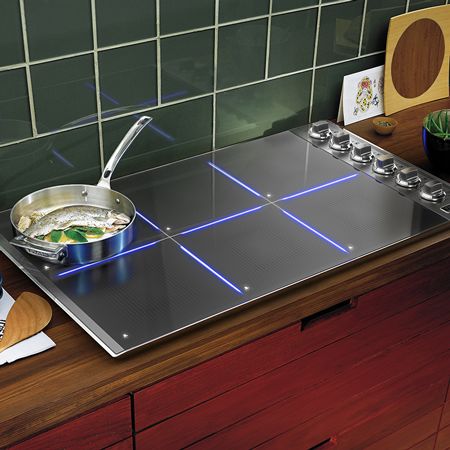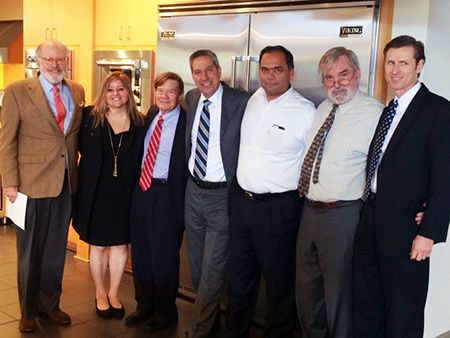Viking Induction Cooktops Featured in Article by SCHOTT

Induction cooktops can boil water in a flash, keep cooking surfaces cooler and safer, and expend less energy while doing so. While still a rare feature in most kitchens, induction cooktops might represent the future of home cooking. But the technology itself is only half the reason why.
Design is driving the future of the kitchen just as fast, if not faster, than the technology. Because induction cooktops generate less ambient heat than electric or gas ranges, they allow for a variety of new form factors, controls, lighting, and other design elements that are now transforming appliances that have remained largely unchanged for decades. And nowhere is this clearer right now than in some of the newest induction cooktops from Viking, which has reimagined the traditional stovetop to spark a new era of sleek, futuristic, high-tech kitchen design.
We recently spoke to Matthew Ortner, Industrial Design Manager at Viking, about the future of kitchen appliance design and the inspirations behind Viking’s new cooktops. Here’s the first part of our conversation, in which Ortner takes a broad look at where kitchen design stands today and where it’s headed:
What trends are you seeing in cooktop design? What colors, shapes, and styles are most popular?
I think that cooktops are becoming more simple and elegant, utilizing fewer parts and incorporating better technology, especially when it comes to induction cooktops. I think up until this point glass cooktop design has not been very exciting, and it’s hard to stand out in the crowd.
As far as finishes go, I would say the most common is black glass, but I have recently seen the market moving toward more metallic finishes, and I see that look staying in the market for a while.
What role does glass play in stove design? What features do you look for when choosing the right glass-ceramic for stovetops?
We currently have both a glass electric and glass induction range on the market. These products do very well, but we find that in some high-end kitchens, the consumer favors gas cooking when it comes to ranges. I think the future is promising for incorporating more glass in range design. When specifying glass in a design project we like to have as much flexibility in the design as possible. As many colors and finishes, edge treatments, forming capabilities, and any other technologies really help in the design process.
What does the future of cooktop design look like?
Glass and cooktops will always work well together. I see more technology being placed into the cooking products to help refine the ability of the products. I think smart kitchen technology will make its way into all kitchen products over time. I also see phone app compatibility, where you can monitor and change things on the fly in the kitchen, as well as cooktops and ranges being wirelessly linked to other appliances so that they work together. You can see this connectivity in our recently introduced Viking Professional 7 Series Ranges.
Induction technology and glass-ceramic materials have opened fresh avenues for cooktop design, and the new induction cooktops from Viking embody many of these possibilities, bridging the gap between contemporary design and the kitchen of the future. Check back soon for the second part of our conversation, in which we take a closer look at Viking’s induction cooktop design, its inspiration, and what it means for every other cooktop on the market.


